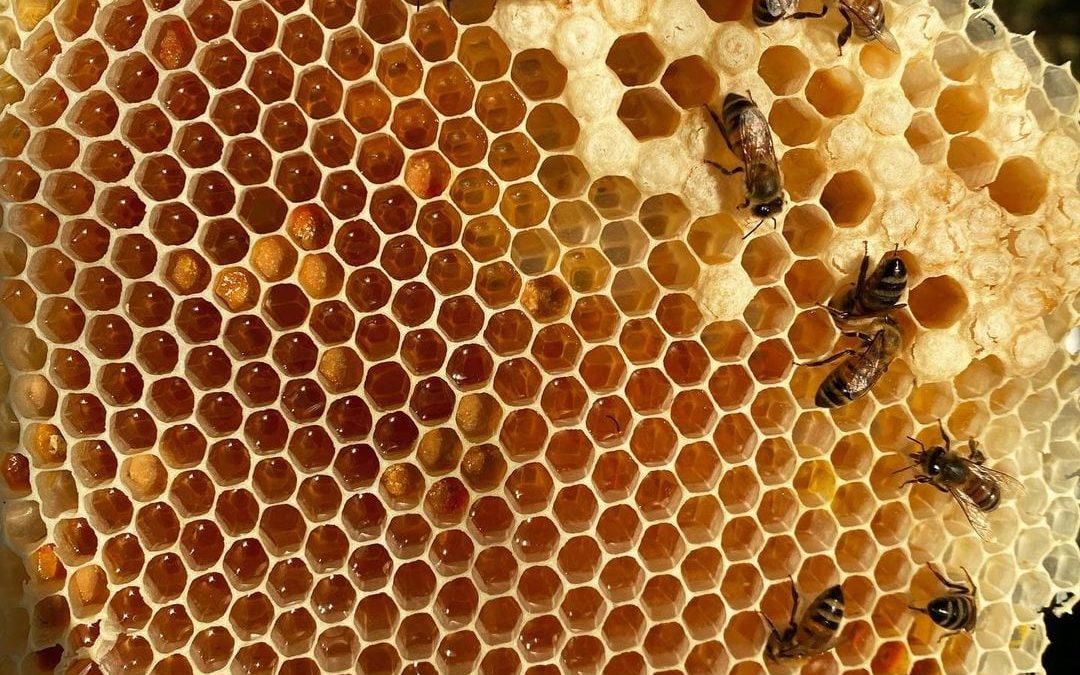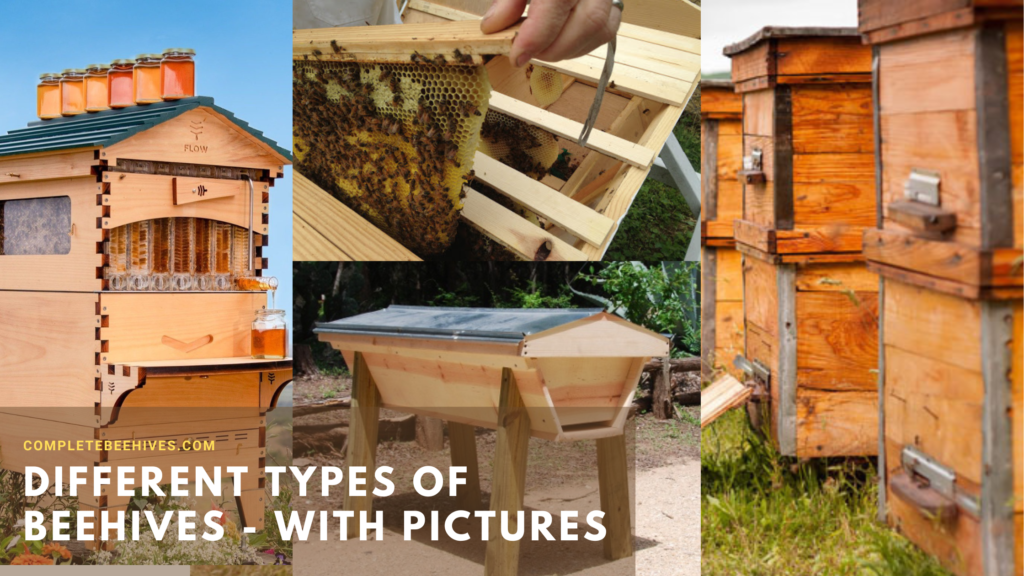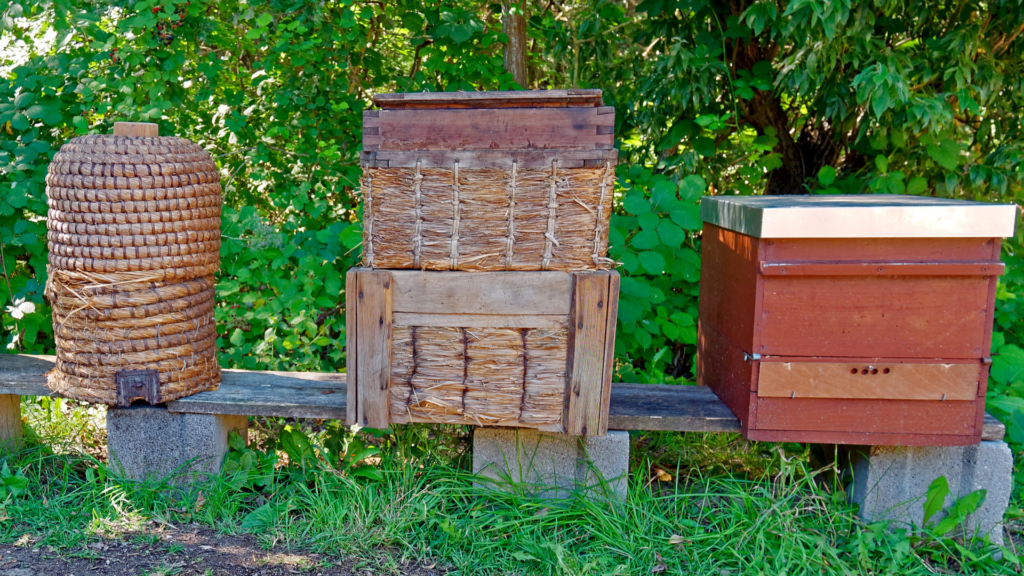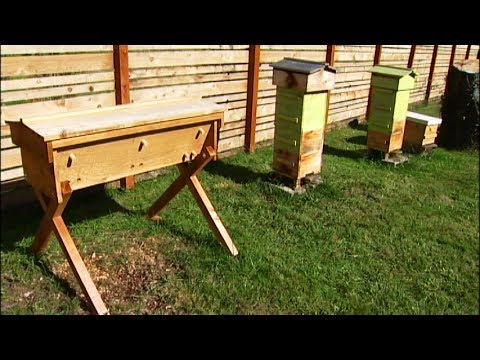
Are you curious about the various types of beehives out there? Well, look no further because we’ve got you covered! In this article, we will explore the world of beehives and take a closer look at the different types available. Whether you’re a beekeeper or simply fascinated by these buzzing creatures, understanding the various beehive options is essential. So, get ready to embark on a journey through the world of beehives and discover the unique features and benefits of each.
Top-Bar Hives
Overview
Top-bar hives are a popular choice among beekeepers who prefer a more natural approach to beekeeping. These hives consist of a long horizontal box with bars across the top where the bees build their combs. The bars are designed to be removable, making it easier to inspect the hive and harvest honey. Top-bar hives mimic the bees’ natural comb structure and allow them to build their colony in a more natural way.
Pros
One of the biggest advantages of top-bar hives is their simplicity. They require less maintenance and equipment compared to other types of beehives, making them ideal for beginners. The bars can be easily removed for inspection and honey collection, reducing the need for heavy lifting or disturbing the bees. Additionally, top-bar hives provide a conducive environment for the bees to build natural, small cell combs, which some beekeepers believe is better for the overall health of the hive.
Cons
While top-bar hives have their benefits, they also come with some drawbacks. Since the combs are not pre-built, it may take longer for the bees to establish their colony and produce honey compared to other hive types. The horizontal layout of the hive can also make it more challenging to manage temperature and moisture levels, especially in extreme climates. Additionally, top-bar hives may not be suitable for large-scale honey production as the honey extraction process can be slower and more labor-intensive.
Langstroth Hives
Overview
Langstroth hives are the most commonly used beehive type worldwide, known for their traditional stacked box design. These hives consist of rectangular or square boxes with frames that hold the beeswax combs. The frames can be easily removed for hive inspections and honey extraction. Langstroth hives offer versatility and can be expanded or reduced in size as the colony grows or shrinks.
Pros
One of the main advantages of Langstroth hives is their modular design, which allows for easy expansion and customization. Beekeepers can add or remove supers (the stackable boxes) as needed, making it convenient to manage larger colonies or control the hive size. The use of standardized frames also makes hive inspections and honey harvesting more efficient. Langstroth hives are highly adaptable and can be used for both hobbyist beekeeping and large-scale commercial operations.
Cons
On the flip side, Langstroth hives can be more complex and time-consuming to assemble and maintain, especially for beginners. The hive boxes, frames, and other equipment can also be relatively expensive compared to other hive types. In some cases, beekeepers may find it challenging to manage temperature and moisture levels in the vertical design of Langstroth hives, especially in regions with extreme climates. Additionally, the standardized comb size may not align with the bees’ natural comb building preferences.

Warre Hives
Overview
Warre hives, also known as “vertical top-bar hives,” were developed by a French beekeeper named Emile Warre. These hives have a similar concept to top-bar hives, but they are vertically stacked rather than horizontal. The bees build their combs on top bars, with each box added to the bottom of the hive as the colony expands. Warre hives aim to provide a more natural environment for the bees while allowing for efficient hive management.
Pros
Warre hives excel in providing bees with a more natural and self-sustaining habitat. The vertical design encourages the bees to build their combs in a way that better mimics their natural behavior. This can result in healthier bees and more sustainable colonies. Warre hives also require minimal intervention, making them an attractive option for beekeepers who prefer a hands-off approach. The smaller size of the boxes also helps with hive stability and insulation.
Cons
Though Warre hives have their merits, they also have certain limitations. As with other natural comb hives, it may take longer for the bees to establish their colony and produce honey compared to traditional hives. The vertical stacking of boxes can make hive inspections and honey harvesting more challenging, as the beekeeper needs to remove multiple boxes to access the lower ones. Additionally, it may be more difficult to monitor and manage pests and diseases in Warre hives due to the smaller box size and less intrusive management techniques.
Horizontal Hives
Overview
Horizontal hives are an alternative to the traditional vertical hive designs. They are designed to mimic the natural cavities bees would inhabit in the wild. Instead of stacking boxes, these hives consist of long horizontal chambers where the bees build their combs. Horizontal hives offer a unique approach to beekeeping and can be suitable for those seeking a more hands-off approach.
Pros
One significant advantage of horizontal hives is their natural comb-building process. The bees can freely design and build their combs in a way that suits their needs, similar to bees in the wild. This can result in healthier colonies and more natural behavior. The horizontal layout also makes hive inspections and honey collection more convenient, as the combs are easily accessible from the side of the hive. Additionally, horizontal hives can provide better thermal insulation and reduce heat loss during colder seasons.
Cons
Despite their advantages, horizontal hives may not be the ideal choice for every beekeeper. The horizontal layout can make management tasks, such as hive inspections and honey extraction, more challenging and time-consuming. The lack of vertical stacking may restrict hive expansion options and potentially hinder colony growth. Additionally, horizontal hives may require specialized knowledge and skills to maintain, making them less suitable for beginners or those with limited beekeeping experience.

Flow Hives
Overview
Flow hives revolutionized the beekeeping industry with their innovative honey harvesting system. Designed to make honey extraction less disruptive to the bees, flow hives feature pre-built plastic honeycomb cells, which can be easily opened to allow the honey to flow out. This eliminates the need for traditional honey extraction methods, such as removing frames or using centrifugal force.
Pros
The main advantage of flow hives lies in their honey extraction system. The innovative design allows beekeepers to harvest honey without disturbing the bees or damaging the comb. This makes honey extraction less stressful for the bees and minimizes the risk of colony disruption. Flow hives also reduce the time and effort required for honey harvesting, making it more accessible to beekeepers with physical limitations or those seeking a more efficient approach.
Cons
While flow hives offer significant convenience, they also have some drawbacks to consider. The initial investment for a flow hive can be considerably higher compared to traditional hives, as the specialized honeycomb frames are needed. The plastic honeycomb cells may also have limited longevity compared to natural beeswax combs. Some beekeepers have also expressed concerns about the reliance on plastic materials and the potential impact it may have on bee health and hive sustainability.
Skep Hives
Overview
Skep hives have a long history and were once the most common type of hive used for beekeeping. They consist of a domed basket made of straw or other natural materials, providing a warm and secure shelter for the bees. While they are less common in modern beekeeping practices, some beekeepers still use skep hives for their traditional appeal.
Pros
One significant advantage of skep hives is their historical charm and traditional aesthetic. They can be a beautiful addition to gardens or apiaries, showcasing the traditional craftsmanship of beekeeping. Skep hives also provide excellent insulation and airflow regulation, offering a favorable environment for the bees. Additionally, the rounded shape of skep hives helps prevent rainwater from pooling, reducing the risk of water damage to the colony.
Cons
Despite their aesthetic appeal, skep hives have several limitations. The baskets are not removable, which makes hive inspections and honey harvesting nearly impossible without causing significant disruption to the colony. The lack of removable frames and combs also hinders effective pest and disease management. Additionally, skep hives offer limited scalability options, which can be problematic for beekeepers with expanding colonies or those seeking efficient honey production.

Top-Entry Hives
Overview
Top-entry hives, also known as “modified top-bar hives,” combine the benefits of both top-bar hives and Langstroth hives. These hives feature a removable top lid, allowing beekeepers to access the hive from the top while maintaining the convenience of removable frames. Top-entry hives offer a balance between natural comb building and efficient hive management.
Pros
The primary advantage of top-entry hives is the ease of access they provide to the beekeeper. The removable top lid allows for convenient hive inspections and honey extraction, similar to Langstroth hives. At the same time, the bees can still build their combs in a more natural way on the top bars, promoting better colony health. The top-entry design also helps with insulation and moisture regulation.
Cons
While top-entry hives have their benefits, they may not be as widely available or standardized compared to other hive types. This can make it more challenging to find compatible equipment or join local beekeeping communities. Additionally, the top-entry design may not be suitable for beekeepers who prefer a specific frame size or compatibility with existing equipment. It’s essential to consider the availability of resources and support before choosing a top-entry hive.
Polystyrene Hives
Overview
Polystyrene hives, also known as “Styrofoam hives,” are made from a lightweight and insulating material called expanded polystyrene (EPS). These hives offer similar functionality to traditional wooden hives but with improved insulation properties. Polystyrene hives have gained popularity in recent years due to their thermal efficiency and ease of maintenance.
Pros
One of the main advantages of polystyrene hives is their excellent insulation capabilities. The expanded polystyrene material helps regulate temperature more effectively, providing a more stable environment for the bees. This can be beneficial during extreme weather conditions, as it helps prevent heat loss or excessive heat buildup. Polystyrene hives are also relatively lightweight, making them easier to handle and transport.
Cons
Despite their thermal benefits, polystyrene hives have some drawbacks to consider. The lightweight nature of the material may make the hive more prone to damage from strong winds or aggressive pests. Polystyrene can also be more challenging to repair compared to wooden hives if any cracks or damage occur. Additionally, some beekeepers prefer the traditional aesthetic of wooden hives and may find polystyrene hives less visually appealing.

Log Hives
Overview
Log hives, also known as “bee gums,” are one of the oldest forms of beehives. They are typically hollowed-out logs or sections of tree trunks that provide a natural nesting environment for bees. Log hives offer a rustic and natural approach to beekeeping, favored by beekeepers who value sustainability and minimal intervention.
Pros
Log hives offer the bees a habitat that closely resembles their natural nesting sites in the wild, promoting their overall health and well-being. They require minimal maintenance and intervention, making them an attractive option for beekeepers seeking a hands-off approach. Log hives can also provide excellent insulation properties, helping the bees regulate temperature and moisture levels.
Cons
While log hives have their advantages, they can present certain challenges. The lack of removable frames or combs makes hive inspections and honey extraction nearly impossible without causing significant disruption to the colony. This makes it difficult to monitor hive health and manage pests and diseases effectively. The irregular shape of log hives can also make it more challenging to move or transport them when necessary.
Observation Hives
Overview
Observation hives are unique beehives designed to provide a window into the inner workings of a beehive. These hives feature transparent or partially transparent walls, allowing beekeepers and visitors to observe the bees’ activities without disturbing them. Observation hives offer an educational and interactive experience, making them a popular choice for educational institutions, museums, and passionate beekeeping enthusiasts.
Pros
One of the most significant advantages of observation hives is their educational value. They provide a captivating view of the bees’ behavior, allowing beekeepers and observers to learn more about their intricate lives and social structure. Observation hives can also be a valuable tool for beekeeping education, providing an up-close experience without the need for specialized protective gear. Additionally, some observation hives feature removable frames for easier maintenance and hive management.
Cons
While observation hives are fascinating, they have limitations that may not suit every beekeeper’s needs. The transparency of the hive walls can expose the bees to excessive light or disruption, potentially causing stress or colony disturbance. Constant observation and interference can also disrupt the natural behavior of the bees, as they may become more defensive or stressed with increased human presence. Observation hives may be better suited for educational purposes rather than everyday beekeeping operations.